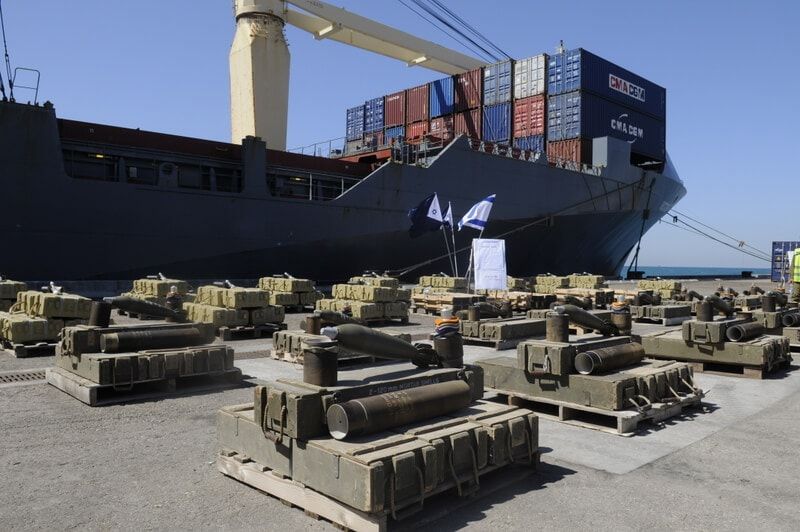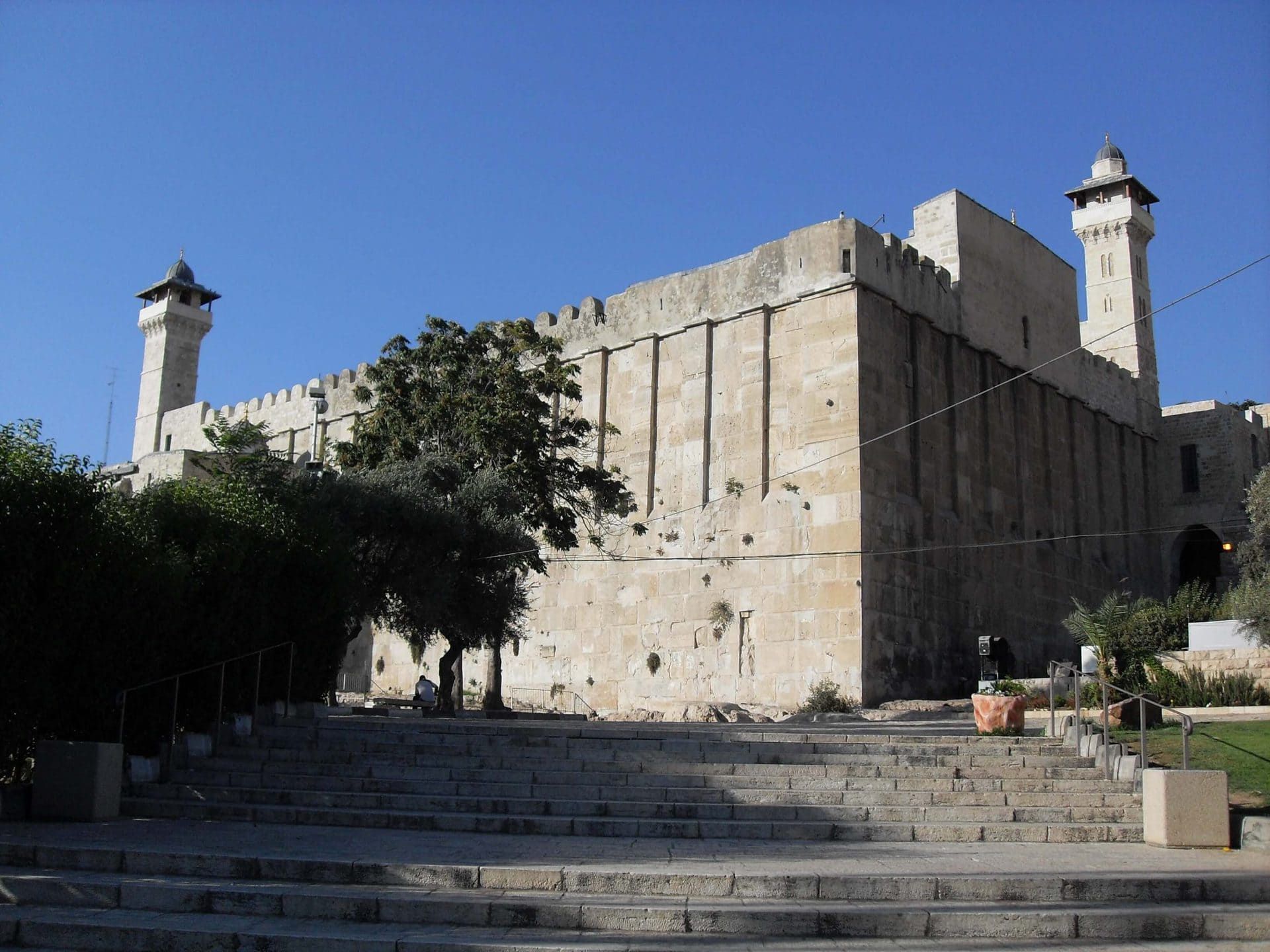An op-ed in the Irish Times blames Israel entirely for why the “Misery of [the] Palestinian people is the result of two historic events marked this year,” the Six Day War and the Balfour Declaration. But the only way that it can blame Israel is by omitting almost all of the crucial – and inconvenient – historical facts that explain the truth of the current situation of the Israeli-Palestinian conflict.
Dr. Conn Mac Gabhann visited Israel with a delegation called the Holy Land Coordination Group, purportedly to “better understand the political situation of the region.” Unfortunately though, it doesn’t seem that he gained much understanding at all.
The Holy Land Coordination Group aims to support Christian communities in Israel and the Palestinian areas, yet seems to have visited with a political agenda to promote the false black-and-white, one-sided view of the conflict where Israel is at fault for everything and Palestinians are blameless. It’s only once you reach the end of the article that part of this agenda becomes clear – the trip appears to have been funded by Trócaire, which supports BDS, spreads biased and false information on Israel, and funds a long list of political, extremist, anti-Israel NGOs.
Join the fight for Israel’s fair coverage in the news
On visiting Gaza, Conn Mac Gabhann says its Palestinians “have been subject to an Israeli siege-like situation” since Hamas took over in 2007. He omits that Gaza is also under an Egyptian blockade, and doesn’t ask, or answer the obvious questions as to why Gaza is in this situation.
Why is Gaza governed by Hamas; what happened before that? Israel unilaterally withdrew from Gaza in 2005, uprooting 8,000 Jews from their homes. Then in 2007, in a violent battle between Hamas and Fatah, Hamas killed and expelled Fatah members, taking control of the Gaza Strip.
So what is the reason for the “siege-like situation?” Hamas turned Gaza into a rocket-launching pad, firing tens of thousands of rockets into Israel over the past 10 years, killing dozens of Israelis. Israel is constantly having to work to stop Hamas smuggling weapons into Gaza by sea and land, and through tunnels. At the same time, Palestinian terrorists have attempted to infiltrate into Israel to carry out attacks, through the crossings, over or through the fence, and through tunnels. To defend against the attack tunnels, Israel is now building an underground barrier along the border.

Mac Gabhann ignores all of this, and laments that “until Gaza I have never seen a system so effectively reduce contact between a population and the outside world;” when the only contact Israel is trying to reduce from Gaza is between terrorists and Israeli citizens.
He writes of the “man-made suffering” inflicted by Israel on sick Palestinians who have to be cared for “without regular sanitary supplies or medical support.” But he ignores the thousands of tons of humanitarian aid Israel transfers into Gaza; how Hamas steals this aid, and money and cement, and uses it for terrorism purposes instead; how sick Gazans are often treated in Israeli hospitals; and how terrorists abuse Israel’s care for human rights by smuggling weapons into Israel via patients – for example in April two sisters from Gaza, one of whom was being treated for cancer in Israel, were caught with explosives disguised as medicine.
Mac Gabhann says Hebron, with streets out of bound to Palestinians, was where “I got my first sense of what exactly is meant by the term “Israeli settlement” and how one is created.” But did he really get a sense of Hebron? He leaves out Hebron’s thousands of years old Jewish connection, how it is the site of the oldest Jewish community in the world, home to the second-holiest site in Judaism, the Tomb of the Patriarchs; and how, for example, even before Israel was declared a state, the Jewish community there was massacred by Arabs in 1929.

Mac Gabhann simply eschews the historical facts, referring to settlements as “built on Palestinian territory occupied by Israel since 1967.” In fact the West Bank was occupied by Jordan since 1948 when Arab armies tried to destroy the newly established Jewish state. In 1967, when they tried again and failed, Israel captured the land in a war of self-defense. So while Mac Gabhann says that “This week also marks 50 years since the commencement of the occupation,” he fails to give any context concerning the Six-Day War that led to Israel’s control over the disputed territories.
Looking at outposts in the West Bank, Mac Gabhann prophesizes that “In a matter of years they will be tower blocks occupied by Jewish people from places like Brooklyn, Russia and Ethiopia.” As Israel often demolishes outposts, and no new settlements have been built in the past 25 years, you have to wonder – what exactly is he basing this on?
Just as disturbing as Mac Gabhann’s apparent belief that he can predict the future, is his obvious aversion to the idea of Jews moving to and living in Israel, and his strange assumption that settlements consist only of Jewish immigrants to Israel. There is no evidence to suggest that American-born, Russian or Ethiopian Jewish immigrants are being sent to live in settlements.
Does Mac Gabhann betray his real feelings towards Jewish self-determination by questioning the legitimacy of Jewish connections to the land by focusing on the fact that Israeli immigrants were not born there?
He also writes of the “Israeli roads, walls, checkpoints and settlements that stretch the concept or even possibility of Palestinian “Authority” to breaking point.” Yet again he leaves out the vital context of why the checkpoints are necessary in the first place, to prevent Palestinian terror attacks, instead suggesting Palestinians are victims of malicious Israeli oppression for no reason. As for suggesting the PA has no “authority,” perhaps he should say that to the Palestinians suffering under their leaders’ corruption, repression and violation of human rights and freedom of speech.
Conn Mac Gabhann may claim he wanted to “better understand the political situation of the region,” but his article not only reflects his lack of understanding, but will ensure Irish Times readers are also imbued with a false picture of Israel’s history and current situation.
Please send your letters to the Irish Times – [email protected] – remembering to include your postal address and telephone numbers to stand a chance of being published.
Featured image: CC BY-SA Victor Grigas via Wikimedia Commons; CC BY Elisa via flickr; with modifications CC BY-SA by HonestReporting; weapons boat CC BY-NC Israel Defense Forces; Hebron CC BY-SA Wikimedia Commons;

